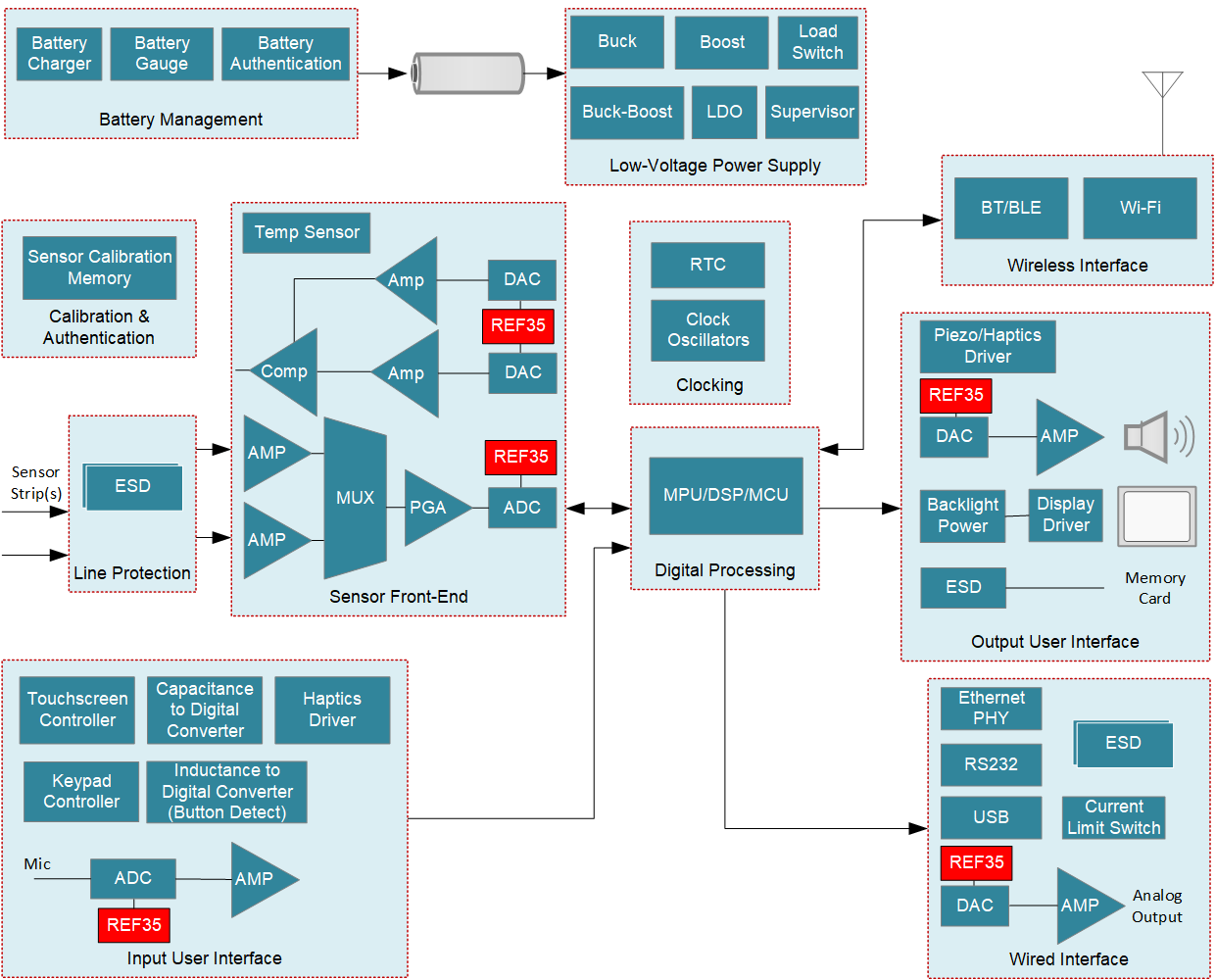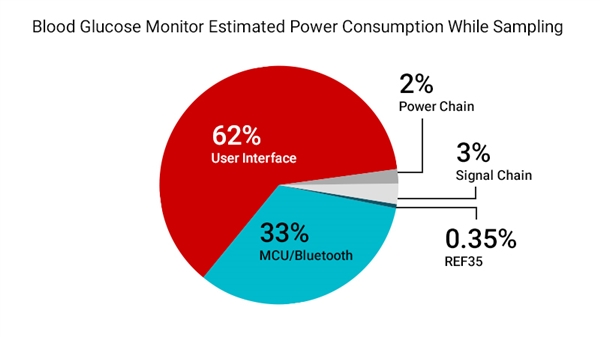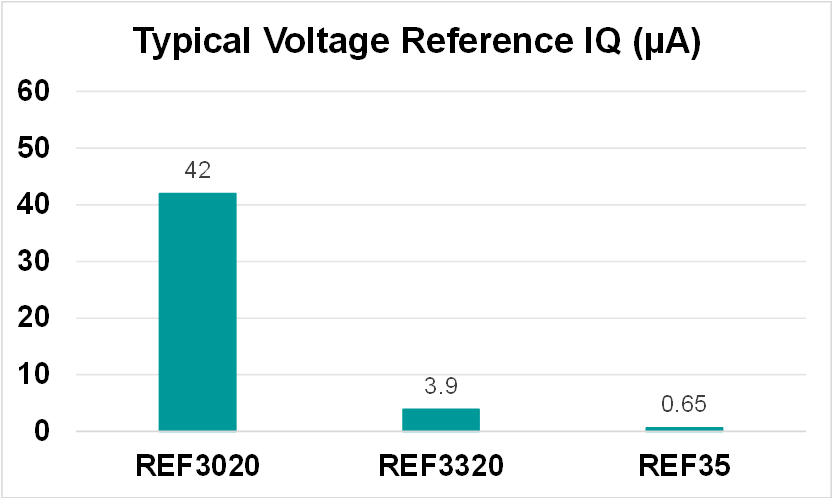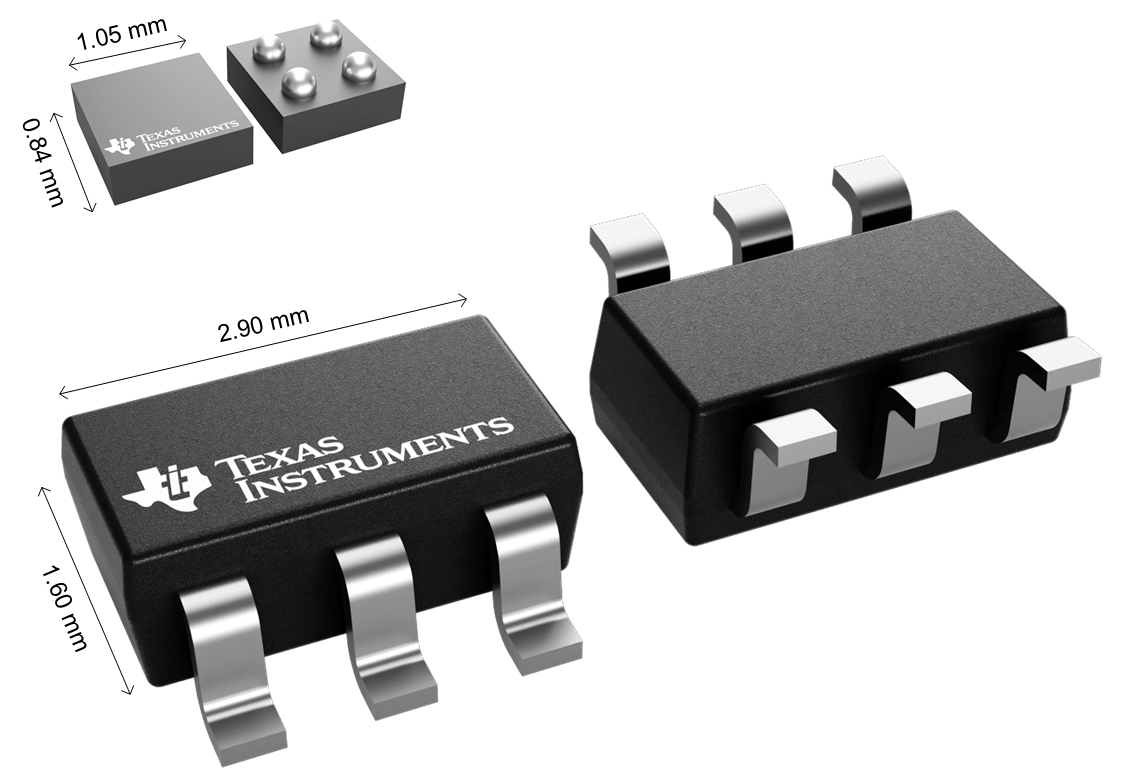SSZT757B March 2018 – April 2024 ADS7042 , REF3312 , REF3320 , REF3333 , REF3425 , REF35

These days, it feels like the “portable future” is right around the corner. Devices that used to be cumbersome and bulky have become light and portable. I saw this firsthand in personal electronics: cellphones were once heavy and slow; they’re now slim, fast and have an increasingly longer battery life.
I’ve also witnessed this trend in personal health care. It is now possible to check vital signs without having to go to the doctor, partly because of the increasingly small solution size and low power of devices such as blood glucose monitors in the palm of your hand. Blood glucose monitors are experiencing a growing trend in lower power with longer battery life that enables users to have a responsive body vital measurement device.
Blood glucose monitors are devices that have extremely low power and try to push quiescent current (IQ) to the lowest limits possible because they must be able to measure at least 1,000 tests on the same battery which is typically a lightweight 3V button cell. Reaching a battery life that can handle 1,000 tests has become an issue as blood glucose monitors start to become more connected with Bluetooth® and other wireless connectivity (as shown in Figure 1). This is because the increase in wireless connectivity in turn increases power consumption and lowers battery life and increase the need for multiple coin-cell (220mAh) or even AAA batteries (1,000mAh), which have an increase in size and weight.
 Figure 1 Blood Glucose Monitor System
Diagram
Figure 1 Blood Glucose Monitor System
DiagramUnlocking Higher Accuracy
A low-IQ Voltage Reference
 Figure 2 Total Power Consumption
Overhead Example (Estimated Percentage)
Figure 2 Total Power Consumption
Overhead Example (Estimated Percentage)The REF35 family also offers wide voltage range options between 1.024V and 5V to benefit applications that use coin-cell batteries. These output voltages offer you the flexibility to get the most out of your ADC by selecting an adequate voltage reference to take advantage of the complete full-scale signal. Higher output voltages also give you the flexibility to power ultra-low-power ADCs such as the ADS7042 that rely on using AVDD as the voltage reference.
Low IQ Is Possible in More Ways than One
 Figure 3 Typical IQ of
Several TI Voltage References
Figure 3 Typical IQ of
Several TI Voltage References1.05mm-by-0.84mm WCSP Voltage Reference
 Figure 4 WCSP vs SOT23-6 Size
Comparison
Figure 4 WCSP vs SOT23-6 Size
ComparisonDon’t force yourself to choose between low system power and high system accuracy, as it is possible to increase ADC and DAC accuracy by adding a low-power voltage reference like the REF35. No matter which application you are designing for, TI offers a large portfolio of voltage references that can help you unlock more accuracy in your system.
Additional Resources
- Read the technical articles on how to reduce power consumption in data-acquisition systems and how to ensure precision in automated processes.
- Download the “Tips and tricks for designing with voltage references” e-book.